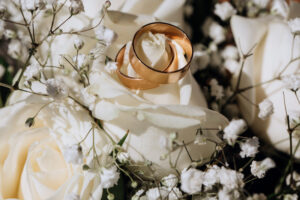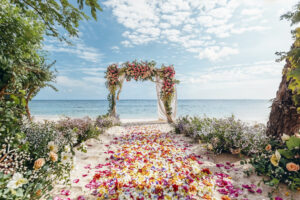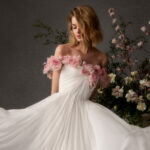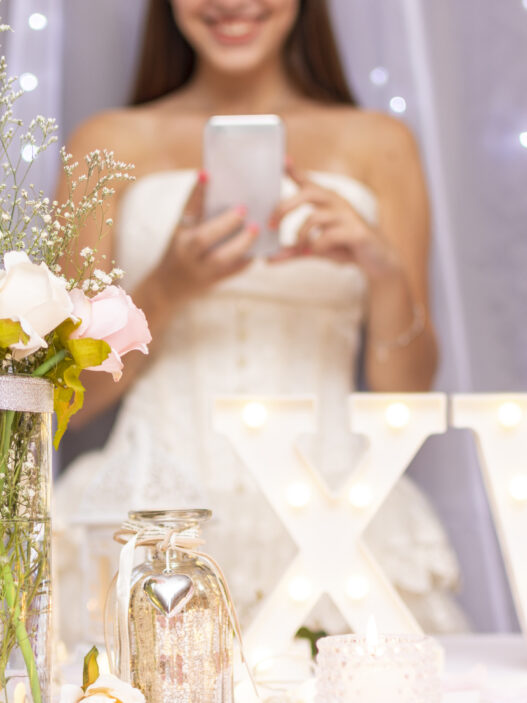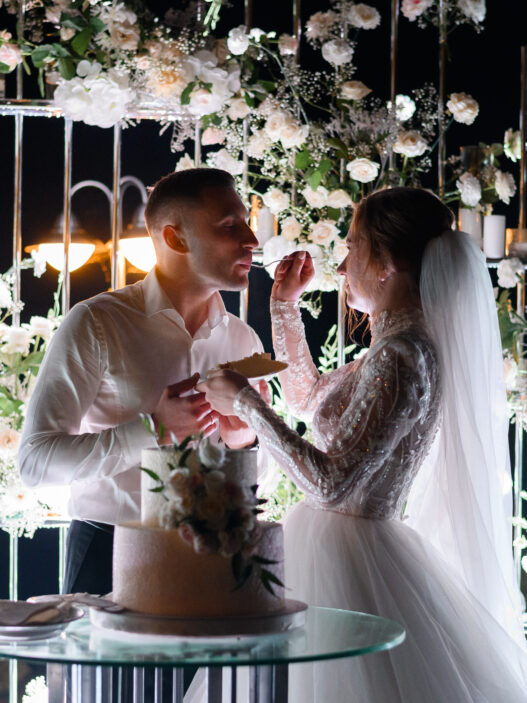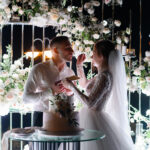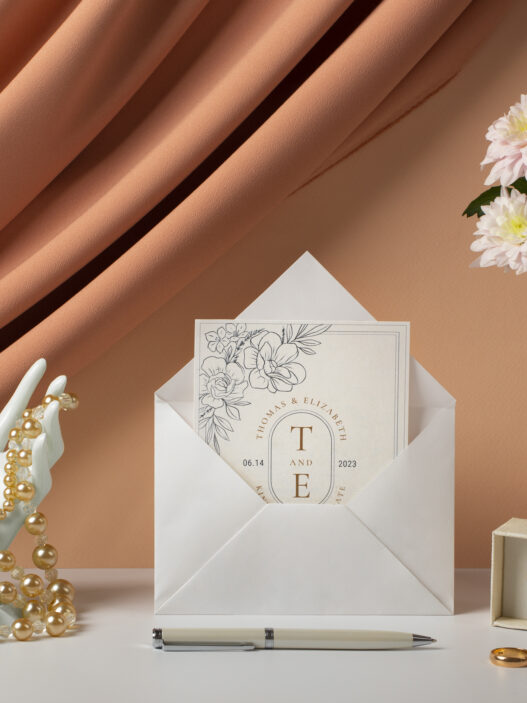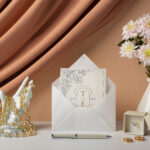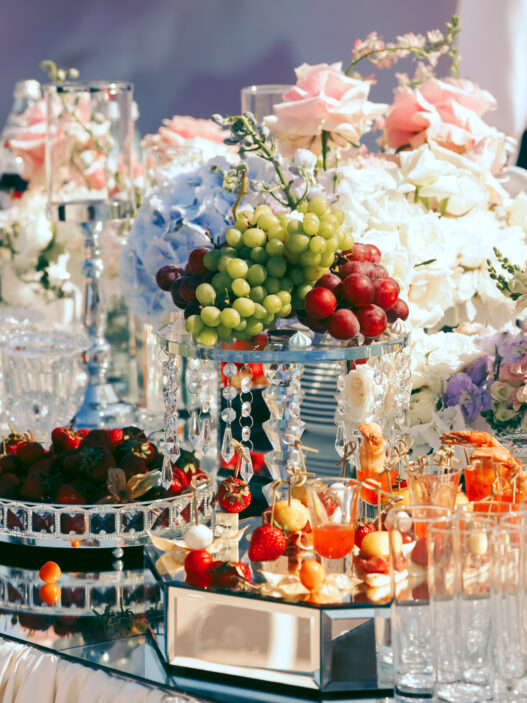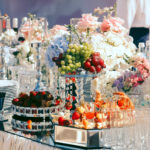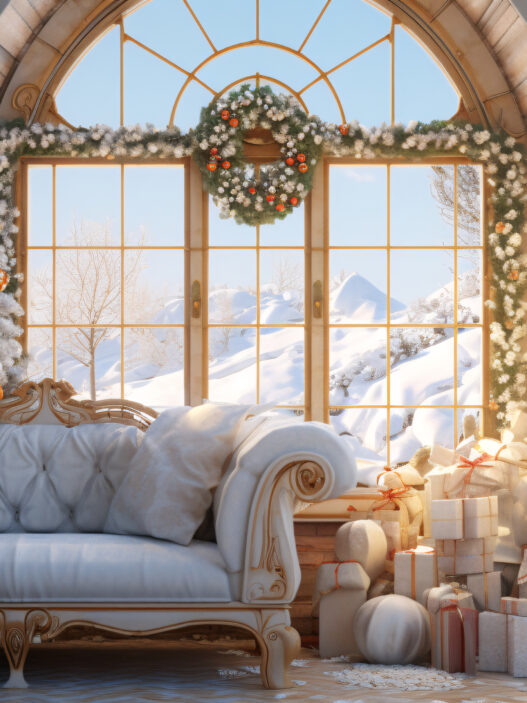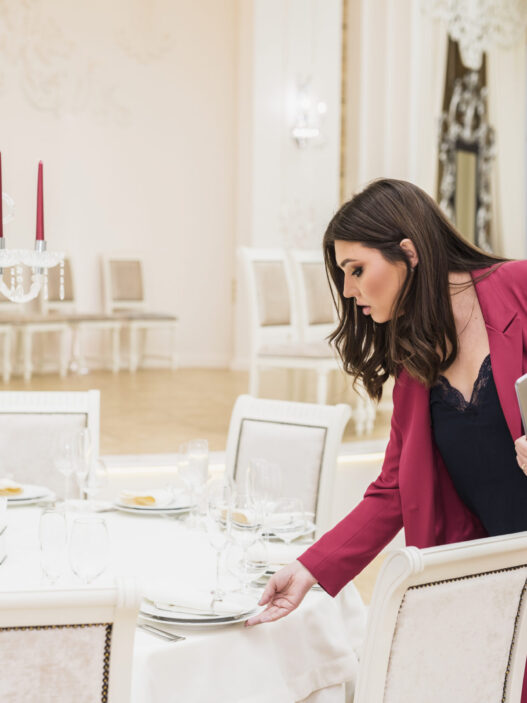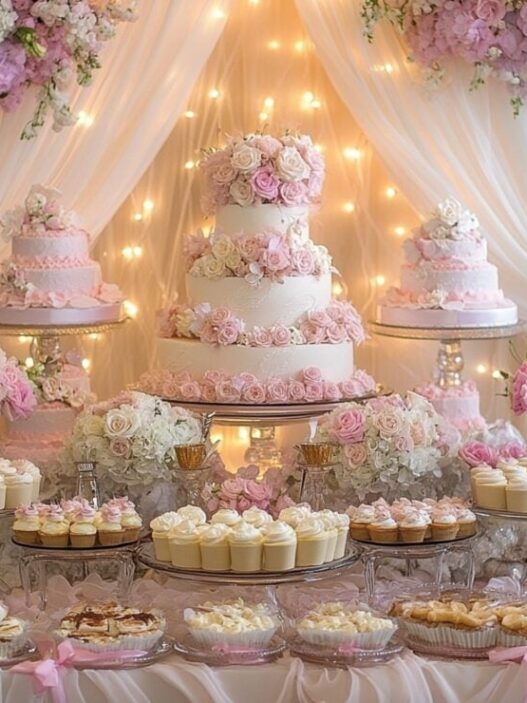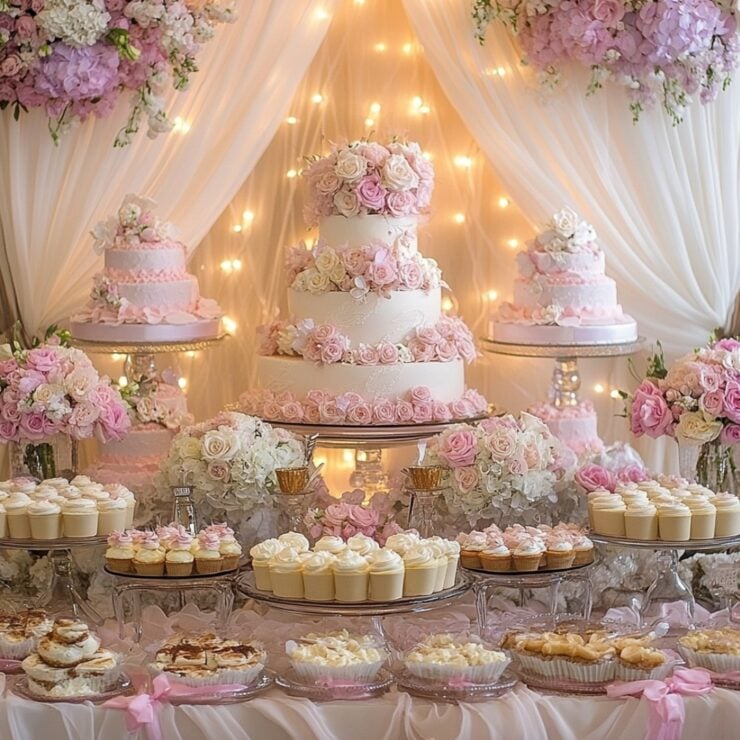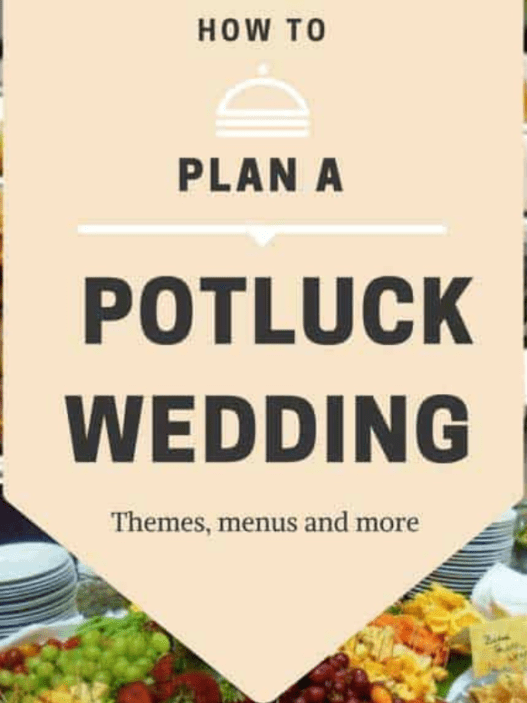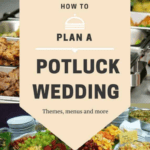Any wedding depends much on the choice of bouquets and flowers. Flowers complement the bride’s outfit, accentuate the ceremony, and fit the theme. The following is a tutorial on choosing the ideal flowers for your big day.
One should match their blossom season to the time of year.
Selecting seasonal flowers guarantees they are reasonably priced and fresh.
Spring brings peony, tulip, daffodil, and lilacs blooms. Perfect for a romantic wedding, they include delicate pastel tones and fragrant smells.
Summer brings popular flowers such hydrangeas, sunflowers, and roses their vivid hues and big blossoms fit a yard environment.
For fall weddings, marigolds, dahlias, and chrysanthemums are excellent these earthy-toned blooms give a warm, rustic impression.
Winter calls for evergreen greenery, amaryllis, and roses red, white, and green colors provide drama and grace to a winter wedding.
2. Traditional wedding bouquets and flowers
These flowers are ageless if your taste is for classic elegance.
Roses: The most recognizable flower for a wedding. Roses represent love they look great in all configurations and come in many colors.
For spring and early summer weddings, peonies—soft, romantic, and lush—are rather common any bouquet gains fullness from them.
Lilies sleek and classy. In conventional bridal bouquets, lilies look great and go nicely.
Large flowers of hydrangeas give volume. Hydrangeas are fantastic for bouquets and centerpieces and come in a variety of colors.
3. Contemporary wedding bouquets: trends
These fashions give brides seeking something more modern distinctive choices.
Perfect for a rustic or vintage vibe are dried flowers. Texture comes from pampas grass, dried lavender, and bleached leaves. Combining dried flowers with fresh blooming works great.
Perfect for destination weddings or couples seeking something dramatic are tropical blossom designs. Popular selections are orchids, proteas, and anthuriums. These blossoms give something different.
Simple, clean flowers are in style. Often only one kind of flower, monochromatic patterns create a sophisticated and modest effect.
More brides are selecting foliage instead of flowers any arrangement gains fresh, natural feel from eucalyptus and ferns.
4. Selecting Bouquets Complementing Your Wedding Style
Your bouquet should capture your own flair as well as the wedding’s theme
Choose wild, unstructured flowers for bohemian chic for a free-spirited vibe, use earthy tones, lots of foliage, and dried flowers.
Vintage: Try for a romantic, vintage atmosphere. Pick roses and flowing ivy. Creams and soft pinks go well. These blooms produce an enduring look.
Rustic: Make use of loose, unassuming bouquettes. Outdoor and barn weddings call for wildflowers, sunflowers, and daisies.
Glamorous bouquets of calla lilies, orchids, and roses for more grace, add satin ribbons or crystals.
5. Match Roses to Your Location
When selecting flowers, the place is really crucial.
Choose durable flowers include daisies, carnations, and sunflowers for outdoor venues these blossoms can withstand the elements of a wedding held outside more delicate flowers, including peony and orchid, fit nicely indoors these blossoms accentuate an indoor environment and beach Weddings perfect are tropical blooms like orchids and hibiscus they survive heat and accentuate a seaside wedding with vivid hues.
6. Sustainable Wedding Flowers Ecological Decisions Made Here
Many couples are choosing environmentally friendly boubs this benefits nearby farmers and helps cut trash.
Local Sourced Blooms select from nearby farms this helps nearby firms and lessens the demand for long-distance shipments.
Use potted plants rather than cut flowers. These can be presented to visitors as gifts or utilized as centerpieces, then replanted.
Flowers from the ceremony will be used at your reception this guarantees no flowers get wasted and helps to reduce waste.
7. Determining the Ideal Bouquet Shape
Complementing your wedding look depends on selecting the appropriate bouquet form.
Traditional and sophisticated, round bouquets feature tightly grouped blossoms in a circular form. Peony, hydrangea, or rose works nicely.
Cascade flowers move dramatically down from top to bottom. Perfect for big weddings, cascading bouquets look fantastic using orchids or trailing ivy.
Perfect for a bohemian or rustic wedding are loose and laid-back hand-tied bouquets. Usually, they seem natural with ribbon tying them.
Small and elegant, posy bouquets are perfect for understated brides. This design calls for daisies, ranunculus, or tulips.
8. Flower Designs Beyond the bouquet.
Wedding flowers go beyond the bouquet. They are quite important in creating the scene.
Floral centerpieces give the reception tables vitality. Simple vases loaded with roses or hydrangeas or tall arrangements can improve the wedding décor.
Add flowers and foliage to a ceremonial arch. It might improve your wedding theme and set the scene for your vows.
Match the bouquet of the groom to his boutonniere. Perfect for these accessories are little blossoms like roses or ranunculus.
9. Cost-effective wedding flower ideas
Beautiful wedding flowers are still available without breaking the budget.
Select Seasonal Blooms: Cheaper and more readily available in-season flowers include They guarantee the most fresh bouquets as well.
Use ceremony flowers at the reception for repurposing. This lowers waste and saves money.
Add more greenery to your designs; it’s a reasonably affordable way to provide volume. It looks lush yet cuts the quantity of costly flowers required.
Your bouquets and bridal flowers should capture your own style and the desired mood. The correct arrangements will accentuate your big day whether your taste is for trendy, dried blossoms or traditional roses. These concepts will enable you to select the ideal floral arrangement, therefore guaranteeing the unforgettable nature of your wedding.
10 Stunning Wedding Flowers and Bouquets to Elevate Your Big Day
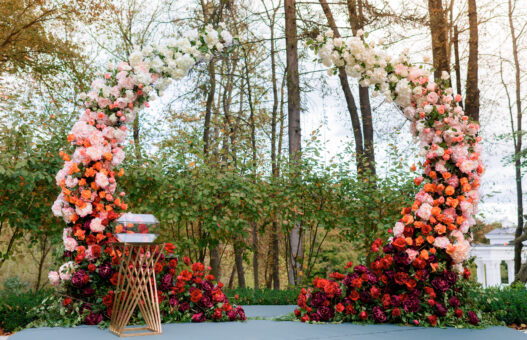
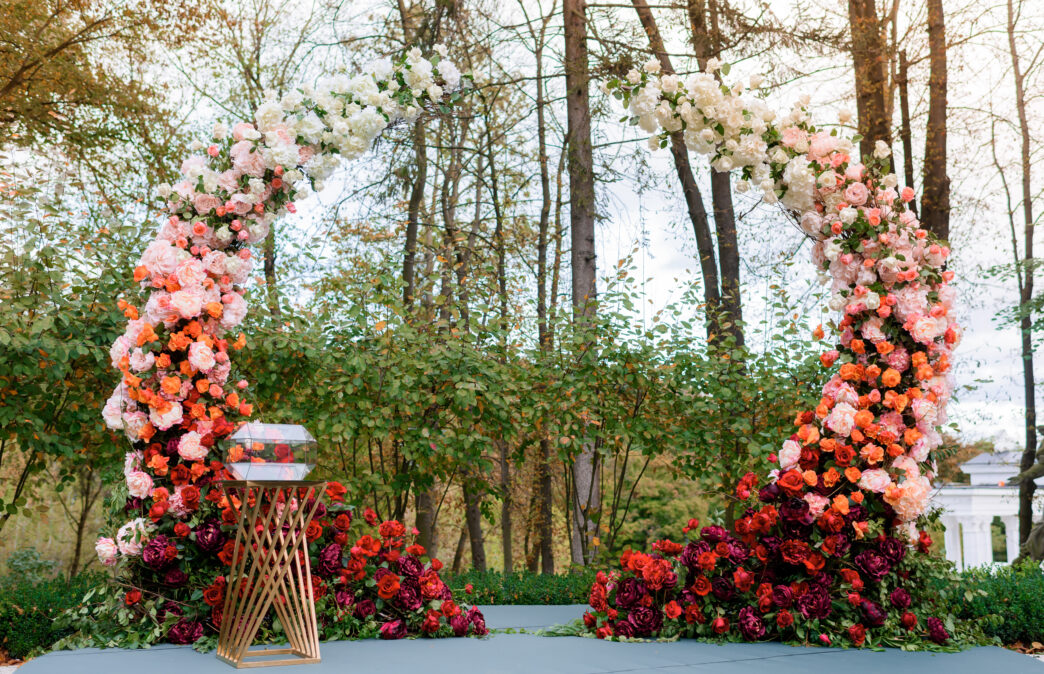
Front view of rich arch decorated with adorable fresh roses flowers. Concept of wedding ceremony details.
Keep Up to Date with the Most Important News
Add a comment
Add a comment





